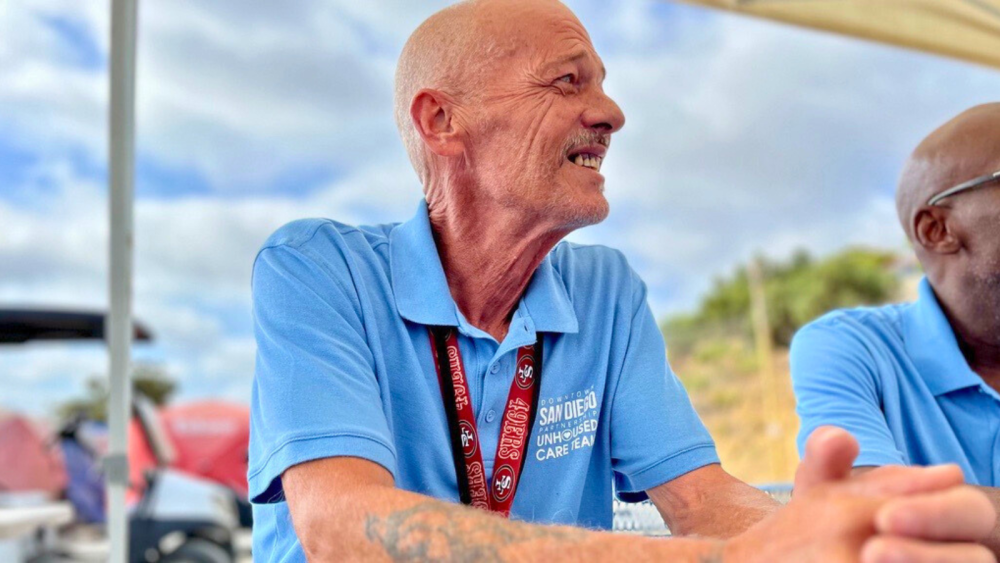Safe Sleeping Sites Are Helping Tackle Homelessness in San Diego

John Richard Weber is getting used to his new San Diego neighborhood. The 61-year-old and his wife have already found a favorite restaurant near their Downtown-area apartment and are enjoying the nearby scenery.
“I love going to the ocean, now we’re right next to it and seeing all the ships that are there – the war ships – that's awesome,” said Weber.
Weber is originally from the San Francisco Bay Area and he enjoys staying active outdoors and spending time with his partner.
“I love camping, fishing, bow hunting – I love painting cars – I took that up as a hobby,” he said. “I love to cook and I love doing things with my wife.
Eight months ago, Weber experienced homelessness for the first time after a job fell through. He and his mother were living outside for a short time.
“That was devastating to have my 80-year-old mom on the streets with me – but I looked out for her,” Weber said. “I love my mom."
The pair were connected to shelter options through police and ended up with a referral to San Diego’s Safe Sleeping Program. Due to health concerns Weber’s mother ended up moving in with other family members. He stayed in the program for about six months and along the way started working for one of the nonprofits operating the site, Downtown San Diego Partnership, before recently being connected to housing.
“They’ve (Downtown San Diego Partnership) all worked as a team to get me in a place and finally it happened two weeks ago and it was just – we were stoked,” Weber said. “From a tent to a home already.”
Webber said he kept working with case managers to get housing and did not give up hope.
“It’s just setting in that, ‘Wow we’re in a home again,’” Weber said. “You know because I've never been homeless – we've always had a home – and once you get there you don't realize what you miss when it’s gone."
When Weber initially started working with Downtown San Diego Partnership, he was a part time employee. He now works full-time as a site coordinator and assists other people in the Safe Sleeping Program. Webber said he’s able to relate to participants and enjoys helping them to end their homelessness.
“I’ve been a construction person all my life – pest control and building houses – this is something totally different but it’s exciting to me," Weber said. “I don't want to retire soon; I’m 61 now and still going strong. Don't have any health issues and I find this is the place I want to be – it's nice helping people and helping them through their struggles.”
Above all, Weber wants people in similar situations to know there is help available.
“You want to look forward and know that there are things out there that will help you,” Weber said. “There is work out there for everybody and you’ve got to want it. You’ve got to want to help yourself because it won’t just fall in your lap – you've got to go after it and make things better.”
The Safe Sleeping Program is a low-barrier shelter option with over 500 tent spaces across two sites on City property. Of those in the program, 86% reported that they had previously been sleeping in places that were not meant for habitation, like the street or other public spaces. Safe Sleeping sites provide meals, transportation and services to help people get back on their feet. At least 88 participants have been housed since the program launched in June 2023.
Housing is always the end goal. Getting someone connected to services who may have previously been hesitant can take time. Along the way participants can get access to medical or dental care, enroll in a detox or substance abuse program, secure a job, or sign up for public benefits. Meals, restrooms, showers, some laundry facilities, shuttle transportation and basic medical care are some of the Safe Sleeping Program’s amenities.
